Light curve:

B3 0754+394 was discovered as a rather weak radio source and catalogued as radio-quiet quasar. Spectroscopic observations classified it as active galactic nucleus (AGN) of Seyfert 1 galaxy. Hubble Space Telescope images allowed to see the galaxy shape with 0.27´ × 0.26´ apparent size.
Seyfert 1 spectra have broad permitted lines and narrower forbidden lines (conversely, Seyfert 2 spectra show permitted and forbidden lines of roughly the same width), features that can be recognized even in amateur spectra.
Lhires III equipped with 150 l/mm grating and 30 micron slit was used. I took 8 x 960s frames using a C9.25 telescope and SXVR-H694 CCD camera operating in binning 2x2. Follows the resulting profile, on the top the 2d spectrum with synthetic colour elaborated by ISIS:
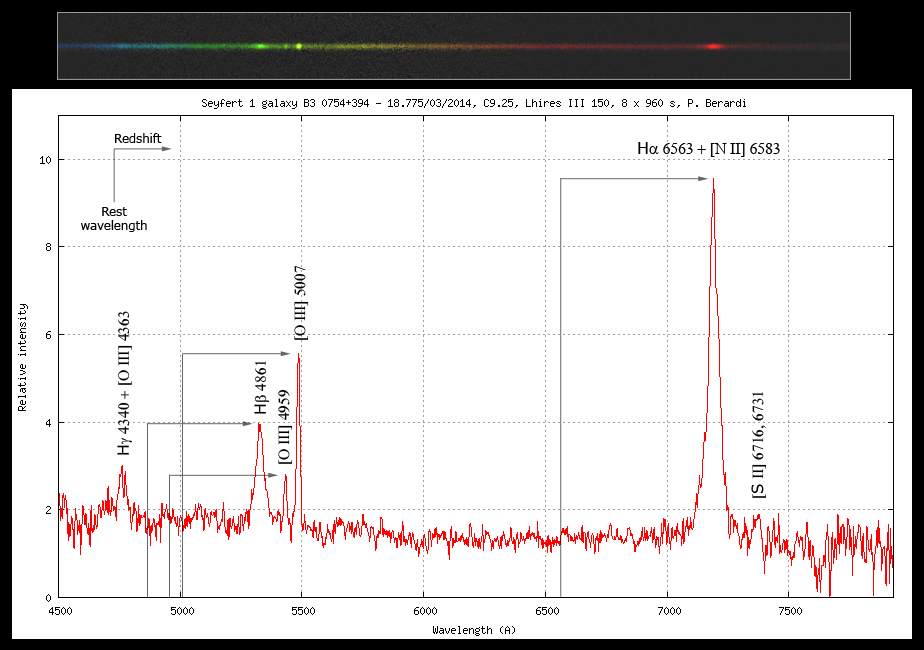
The AGN has an evident recessional velocity with emission line (and entire spectrum) strongly shifted toward red for Doppler-Fizeau effect. I put a reference line where emissions should be at rest wavelength. H-alpha is beyond 7000A and H-beta, at about 5300A, appears completely green instead of blue-cyan colour. Note the broadening of Balmer lines compared to the narrower [O III] lines, indicating a Seyfert 1 spectrum. On the profile, H-alpha and H-beta lines measure about 1800 Km/s FWHM while 600 Km/s for [O III] 5007 line.
We can calculate the redshift (z value) and radial velocity. Considering the [O III] 5007 line (seems to me the better line), observed at 5486A, I obtain z = (5486-5007)/5007 = 0.0957. Note in the background of raw 2d spectrum there is a known emission line, produced by Hg lamps, very close to main oxygen AGN line that allows a precise wavelength calibration (relatively, this is a low-res spectrum).
Radial velocity calculated with the relativistic formula:

give v = 27300 Km/s
Lhires III slit view:
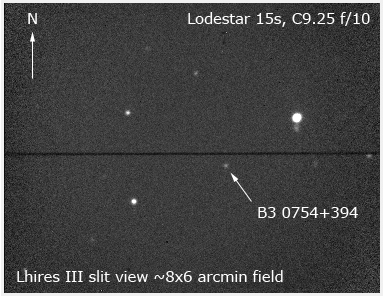
Centering on slit with 5s exposure (guide camera) and manual levels stretching (with auto-stretching galaxy would be invisible):
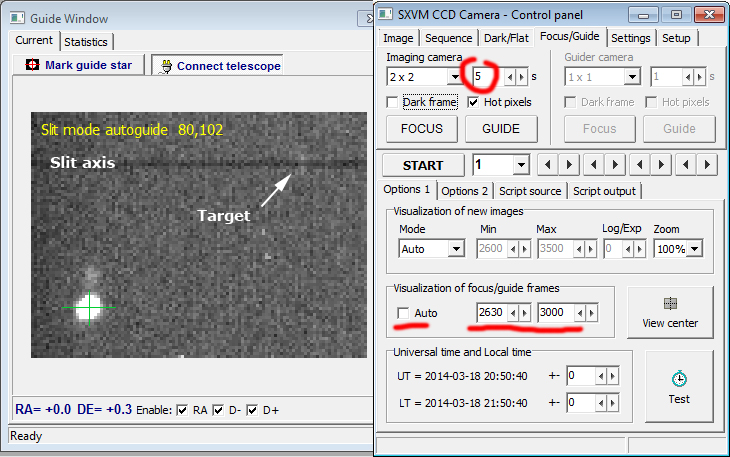
Guiding on a mag 10.4 field star with 0.5s exposure while target is on slit:
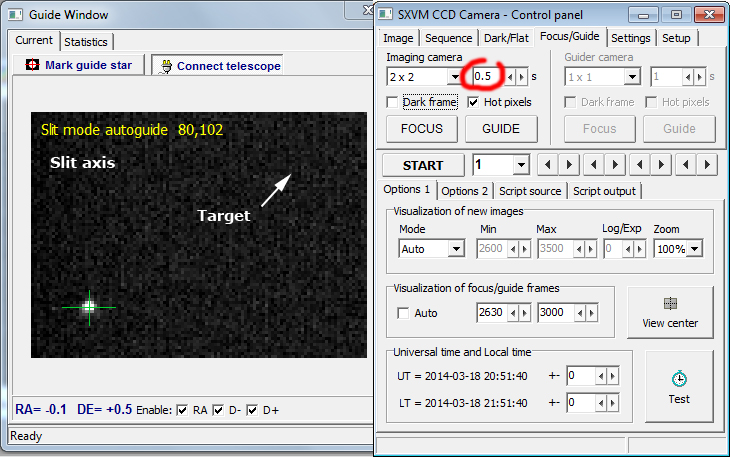
I chose this target also because I have another spectrum taken some years ago with the Star Analyser 100 grating. It's interesting to compare the results, although the instrumental response of slitless spectrum is not correctly compensated (IR is over-corrected due to residual offset in the 2d spectrum):
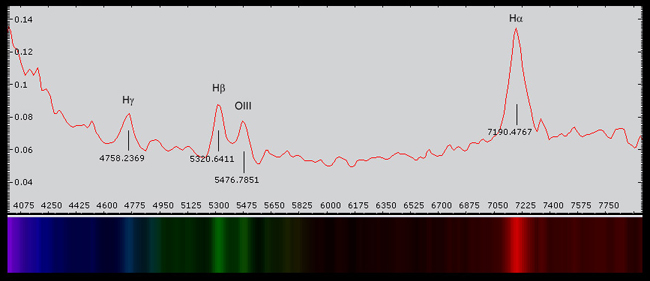
Spectra have a different resolution, R~100 for SA100 and R~700 for Lhires III. SA100 spectrum does not allow to recognize the different broadening of permitted and forbidden lines. All lines have about the same large instrumental FWHM and their height reflect the equivalent width (EW_H-beta > EW_[O III] 5007 in both spectra). Despite the lower resolution, the SA100 spectrum allows a good calculation of object redshift. The mean of z values for the tagged lines is 0.095.
Paolo